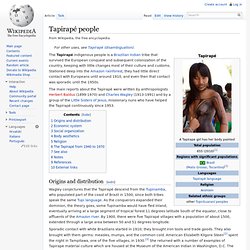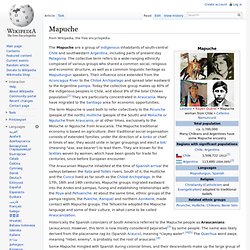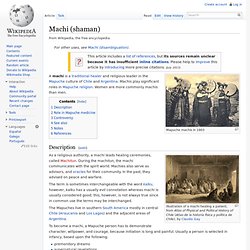

Shamanism. The earliest known depiction of a Siberian shaman, produced by the Dutch explorer Nicolaes Witsen, who authored an account of his travels among Samoyedic- and Tungusic-speaking peoples in 1692.

Witsen labelled the illustration as a "Priest of the Devil" and gave this figure clawed feet to highlight what Witsen perceived as demonic qualities.[1] Shamanism (/ˈʃɑːmən/ SHAH-mən or /ˈʃeɪmən/ SHAY-mən) is a practice that involves a practitioner reaching altered states of consciousness in order to encounter and interact with the spirit world and channel these transcendental energies into this world.[2] A shaman is a person regarded as having access to, and influence in, the world of benevolent and malevolent spirits, who typically enters into a trance state during a ritual, and practices divination and healing.[3] Santo Daime. Ceremonies — "trabalhos" (Brazilian Portuguese for "works") — are typically several hours long and are undertaken sitting in silent "concentration", or sung collectively, dancing according to simple steps in geometrical formation.

Ayahuasca, referred to as Daime within the practice, which contains several psychoactive compounds, is drunk as part of the ceremony. The drinking of Daime can induce a strong emetic effect which is embraced as both emotional and physical purging. Santo Daime churches promote a wholesome lifestyle in conformity with Irineu's motto of "harmony, love, truth and justice", as well as other key doctrinal values such as strength, humility, fraternity and purity of heart.
Tapirapé people. The Tapirapé indigenous people is a Brazilian Indian tribe that survived the European conquest and subsequent colonization of the country, keeping with little changes most of their culture and customs.

Stationed deep into the Amazon rainforest, they had little direct contact with Europeans until around 1910, and even then that contact was sporadic until the 1950s. The main reports about the Tapirapé were written by anthropologists Herbert Baldus (1899-1970) and Charles Wagley (1913-1991) and by a group of the Little Sisters of Jesus, missionary nuns who have helped the Tapirapé continuously since 1953. Origins and distribution[edit] Wagley conjectures that the Tapirapé descend from the Tupinamba, who populated part of the coast of Brazil in 1500, since both tribes speak the same Tupi language.
Economic system[edit] Wai-wai people. The Wai-wai (also written Waiwai or Wai Wai) are a Carib-speaking ethnic group of Guyana and northern Brazil.

They are part of the Amerindian population that make up part of South America and are an indigenous group. They are one of the smallest of the Amerindian groups with a population estimated at around 1137 people and are a nomadic hunting and gathering group. Their society consists of different lowland forest peoples who have maintained much of their cultural identity with the exception of Christianity which was introduced to them in the late 1950s.
History[edit] The Amerindian population of Guyana is approximately 31,000. The explorer, Sir Robert Schomburgk, may have been the first non- Indian to have contact with the Wai-Wai in December 1837. "Of medium height, their skin lighter than that of Tarumas, in their general appearance and language they resemble the Makuskis a good deal. During the early 20th century, some of the Wai Wai in Brazil moved further north. Geography[edit] Mapuche. Historically the Spanish colonizers of South America referred to the Mapuche people as Araucanians (araucanos).

However, this term is now mostly considered pejorative[3] by some people. The name was likely derived from the placename rag ko (Spanish Arauco), meaning "clayey water".[4][5] The Quechua word awqa, meaning "rebel, enemy", is probably not the root of araucano.[4] History[edit] Pre–Columbian period[edit] Archaeological finds have shown the existence of a Mapuche culture in Chile as early as 600 to 500 BC.[6] Genetically Mapuches differ from the adjacent indigenous peoples of Patagonia.[7] This suggests a "different origin or long lasting separation of Mapuche and Patagonian populations".[7] War with the Spanish for 300 years[edit] The Spanish arrived to Mapuche territory from Peru.
A watershed event happened in 1598. Machi (shaman) Mapuche machis in 1903 A machi is a traditional healer and religious leader in the Mapuche culture of Chile and Argentina.

Machis play significant roles in Mapuche religion. Women are more commonly machis than men. Illustration of a machi healing a patient, from Atlas of Physical and Political History of Chile (Atlas de la historia física y política de Chile), by Claudio Gay As a religious authority, a machi leads healing ceremonies, called Machitun. The term is sometimes interchangeable with the word kalku, however, kalku has a usually evil connotation whereas machi is usually considered good; this, however, is not always true since in common use the terms may be interchanged. The Mapuches live in southern South America mostly in central Chile (Araucanía and Los Lagos) and the adjacent areas of Argentina. To become a machi, a Mapuche person has to demonstrate character, willpower, and courage, because initiation is long and painful.